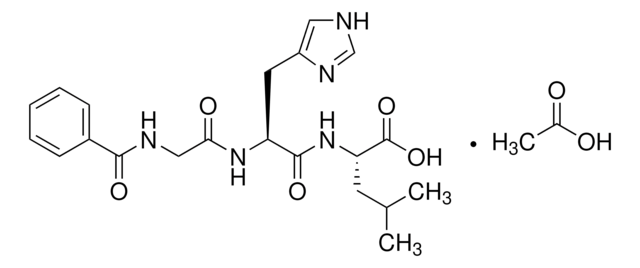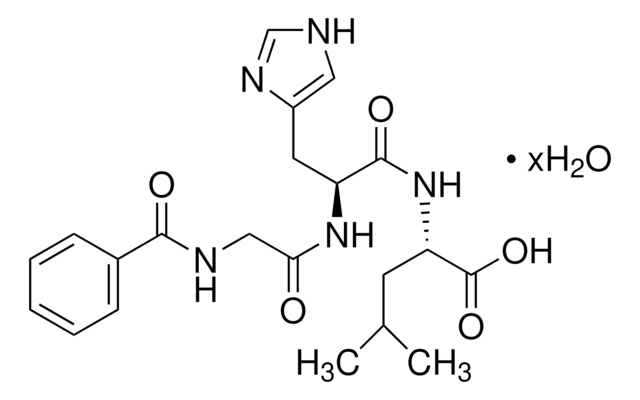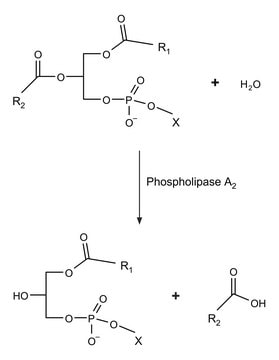H7017
Hemocyanin from Megathura crenulata (keyhole limpet)
Synonyme(s) :
KLH, Keyhole limpet hemocyanin
About This Item
Produits recommandés
Source biologique
Megathura crenulata
Niveau de qualité
Forme
powder
Conditionnement
vial of KLH (KLH is present by weight at approximately 1 part KLH to 5 parts total solid.)
Technique(s)
ELISA: suitable
Solubilité
H2O: soluble
Température de stockage
2-8°C
Vous recherchez des produits similaires ? Visite Guide de comparaison des produits
Description générale
Application
Forme physique
Reconstitution
Reconstituted protein solution may be stored up to 2 months at −20 °C.
Code de la classe de stockage
10 - Combustible liquids
Classe de danger pour l'eau (WGK)
WGK 3
Point d'éclair (°F)
Not applicable
Point d'éclair (°C)
Not applicable
Équipement de protection individuelle
Eyeshields, Gloves, type N95 (US)
Certificats d'analyse (COA)
Recherchez un Certificats d'analyse (COA) en saisissant le numéro de lot du produit. Les numéros de lot figurent sur l'étiquette du produit après les mots "Lot" ou "Batch".
Déjà en possession de ce produit ?
Retrouvez la documentation relative aux produits que vous avez récemment achetés dans la Bibliothèque de documents.
Notre équipe de scientifiques dispose d'une expérience dans tous les secteurs de la recherche, notamment en sciences de la vie, science des matériaux, synthèse chimique, chromatographie, analyse et dans de nombreux autres domaines..
Contacter notre Service technique




